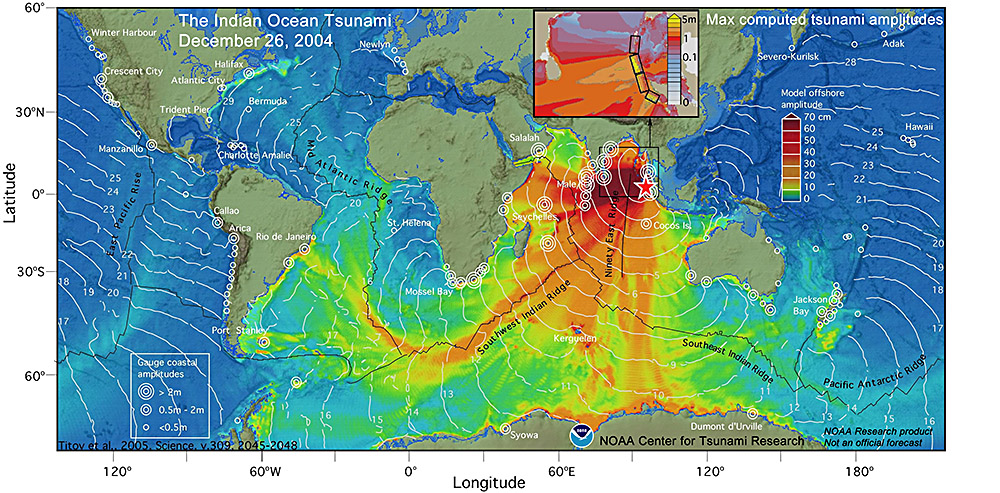Introduction to the Tsunamis
Communities along the coasts of all the world's oceans are at risk from tsunamis. They are one of nature's most powerful and destructive forces.
Communities along the coasts of all the world's oceans are at risk from tsunamis. They are one of nature's most powerful and destructive forces.
Fast Facts

The word "tsunami," pronounced (soo-NAH-mee) comes from the Japanese characters meaning "harbor wave."
Fast Facts

The word "tsunami," pronounced (soo-NAH-mee) comes from the Japanese characters meaning "harbor wave."
Tsunamis are a series of long waves generated by a large and sudden displacement of the ocean. Large earthquakes below or near the ocean floor are the most common cause, but landslides, volcanic activity, certain types of weather, and meteorites can also cause a tsunami. Tsunamis are sometimes referred to as "tidal waves", but this is very misleading as they are not related to tides.
Tsunamis radiate outward in all directions from their source and can move across entire ocean basins. When they reach the coast, they can cause dangerous coastal flooding and powerful currents that can last for several hours or days.
Although they occur relatively infrequently and most are small and nondestructive, they can be a serious threat to life and property. Since 1850, tsunamis have claimed hundreds of thousands of lives and caused hundreds of billions of dollars in damage around the world.

A tsunami can strike any ocean coast at any time. There is no season for tsunamis. This is quite evident when we look at some records of past tsunamis.
Fast Facts

The word "tsunami," pronounced (soo-NAH-mee) comes from the Japanese characters meaning "harbor wave."


